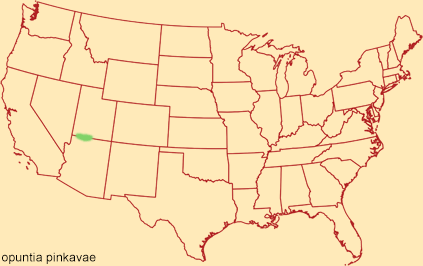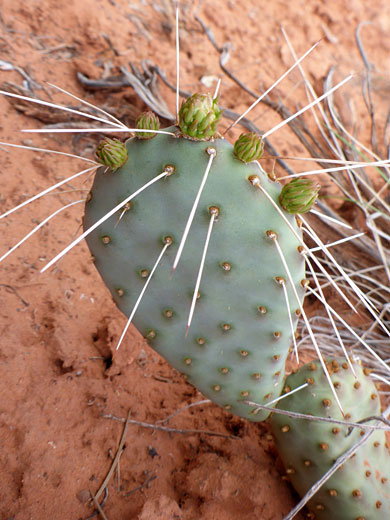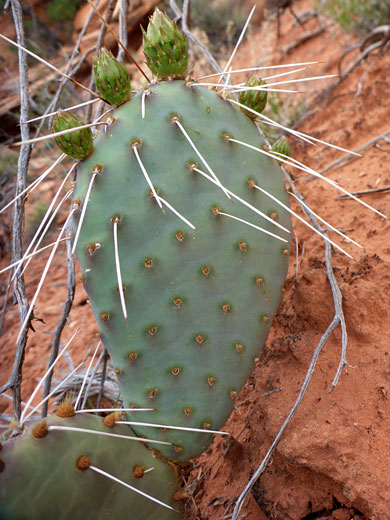Scientific name:
Opuntia pinkavae
Common name:
Pinkava's pricklypear
Range:
A small area in southwest Utah and northwest Arizona, centered on Kanab and Fredonia
Form:
Small, low clusters; pads along the ground or slightly ascending
Habitat:
Pinyon-juniper woodland, grassland, rocky flats, on sandstone or (less often) limestone substrates, between 4,500 and 5,300 feet
Flowers:
Rose pink, appearing in May and June

Distribution map for opuntia pinkavae
Opuntia pinkavae is limited in both elevation and geographical area; it is found in scattered places around the Utah-Arizona border, including Kanab, Fredonia and the Paria Plateau.
The greyish-green pads are obovate in shape, up to 6 inches long and 4 inches across, usually with 7 or 8 areoles in the central diagonal rows. Glochids are conspicuous. Spines occur in the uppermost areoles only, generally those above the midpoint; they number from one to three, per areole. Spines are white to light gray or yellowish in color, the longest around 2 inches, and they tend to angle downwards somewhat, below the plane.
Flowers are uniformly rose pink to magenta, around 1.5 inches across. Stamens have magenta or orange filaments and yellow anthers. The lobed stigma is green, the style white. Fruits are spiny.
The greyish-green pads are obovate in shape, up to 6 inches long and 4 inches across, usually with 7 or 8 areoles in the central diagonal rows. Glochids are conspicuous. Spines occur in the uppermost areoles only, generally those above the midpoint; they number from one to three, per areole. Spines are white to light gray or yellowish in color, the longest around 2 inches, and they tend to angle downwards somewhat, below the plane.
Flowers are uniformly rose pink to magenta, around 1.5 inches across. Stamens have magenta or orange filaments and yellow anthers. The lobed stigma is green, the style white. Fruits are spiny.
All Contents © Copyright The American Southwest | Comments and Questions | Contribute | Affiliate Marketing Disclosure | Site Map



